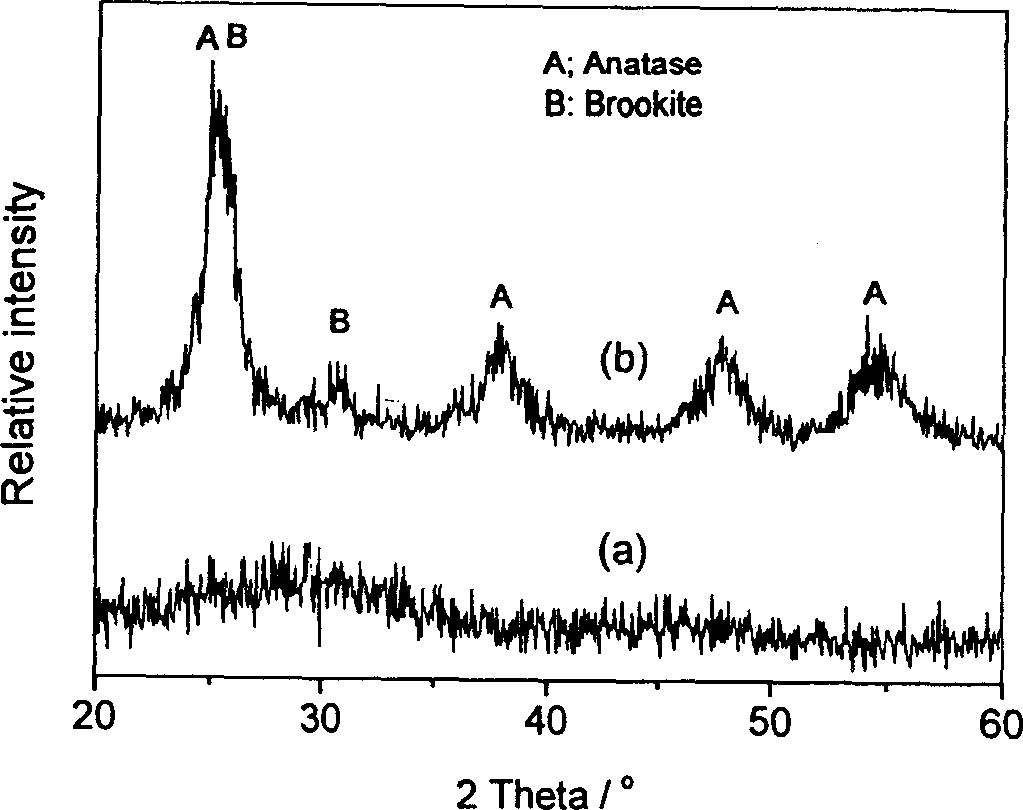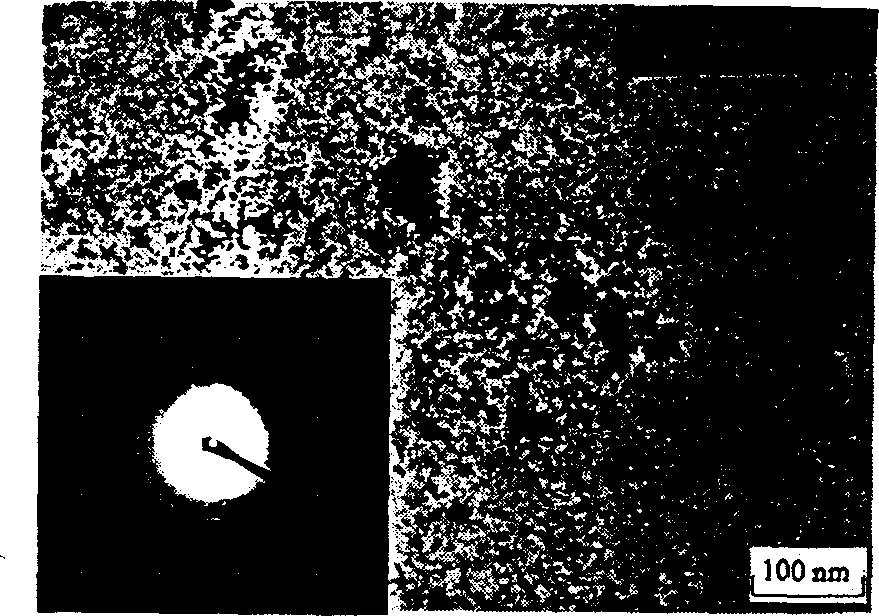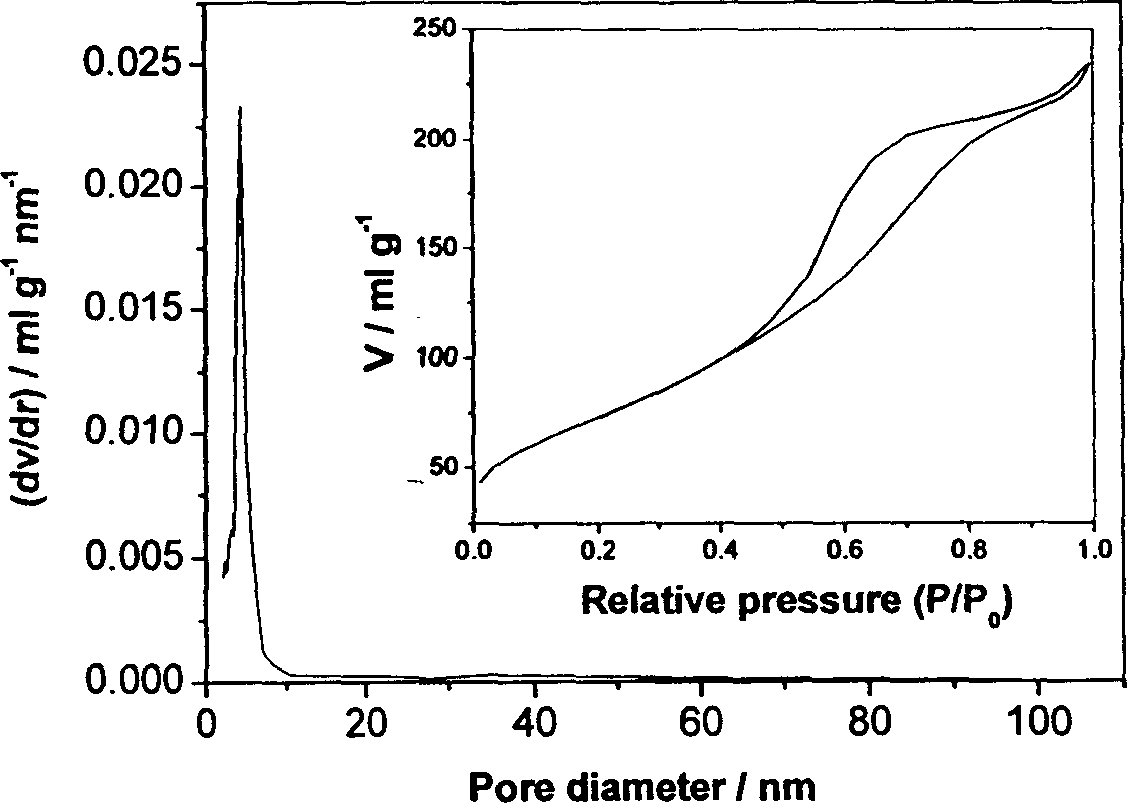Low-temp. solvent evaporation induced crystallization process for preparing crystallized titanium dioxide photocatalyst
A technology of titanium dioxide and photocatalyst, which is applied in the direction of catalyst activation/preparation, titanium dioxide, titanium oxide/hydroxide, etc., and can solve the problems of particle growth, specific surface area, decline, etc.
- Summary
- Abstract
- Description
- Claims
- Application Information
AI Technical Summary
Problems solved by technology
Method used
Image
Examples
Embodiment 1
[0020] The method for preparing nanocrystalline titanium dioxide powder photocatalyst by low-temperature solvent evaporation-induced crystallization is as follows: use isopropyl titanate as the titanium source, add 0.063 moles of isopropyl titanate to 113 ml of distilled water dropwise for hydrolysis, and stir vigorously at the same time. For 1 hour, the molar ratio of water to isopropyl titanate was 100:1. After aging the titanium dioxide sol sample obtained by hydrolysis at 25°C for 24 hours, the sample was placed in an oven and gradually evaporated at 100°C to remove water and organic solvent to obtain titanium dioxide xerogel powder. Finally, grind the xerogel finely to obtain titanium dioxide powder photocatalyst.
[0021] figure 1 shows the XRD pattern of titanium dioxide wet gel and xerogel, from figure 1 It can be seen that the titanium dioxide wet gel obtained by the direct hydrolysis of isopropyl titanate is amorphous, however, the titanium dioxide xerogel powder p...
Embodiment 2
[0026] Except that the titanium source used is n-butyl titanate, other reaction conditions such as the concentration of the titanium source, the amount of solvent water, the temperature and time of hydrolysis, aging and solvent evaporation, etc. are all exactly the same as in Example 1, and the obtained titanium dioxide The phase structure and composition of the powder photocatalyst are: anatase accounts for 67%, and brookite phase accounts for 33%. According to the Scherrer formula, the grain sizes of anatase and brookite phases were calculated to be 5.0 and 3.1 nm, respectively. The titanium dioxide photocatalyst prepared with n-butyl titanate as the titanium source also showed very high photocatalytic activity, with an apparent rate constant of 3.72×10 -3 (min -1 ), and the photocatalytic degradation rate constant of Degussa P25 is 4.19×10 -3 (min -1 )near.
Embodiment 3
[0028] The temperature at which the solvent evaporates is 140°C. Except that the temperature of solvent evaporation is different, other reaction conditions such as titanium source, the concentration of titanium source, the amount of solvent water, the temperature and time of hydrolysis and aging, the time of solvent evaporation etc. are all identical with embodiment 1, prepared TiO2 powder photocatalyst showed higher photocatalytic activity with an apparent rate constant of 3.91×10 -3 (min -1 ). This may be due to the better crystallinity of the prepared titanium dioxide powder photocatalyst.
PUM
| Property | Measurement | Unit |
|---|---|---|
| Phase transition temperature | aaaaa | aaaaa |
| Grain | aaaaa | aaaaa |
| Average pore size | aaaaa | aaaaa |
Abstract
Description
Claims
Application Information
 Login to View More
Login to View More - R&D
- Intellectual Property
- Life Sciences
- Materials
- Tech Scout
- Unparalleled Data Quality
- Higher Quality Content
- 60% Fewer Hallucinations
Browse by: Latest US Patents, China's latest patents, Technical Efficacy Thesaurus, Application Domain, Technology Topic, Popular Technical Reports.
© 2025 PatSnap. All rights reserved.Legal|Privacy policy|Modern Slavery Act Transparency Statement|Sitemap|About US| Contact US: help@patsnap.com



